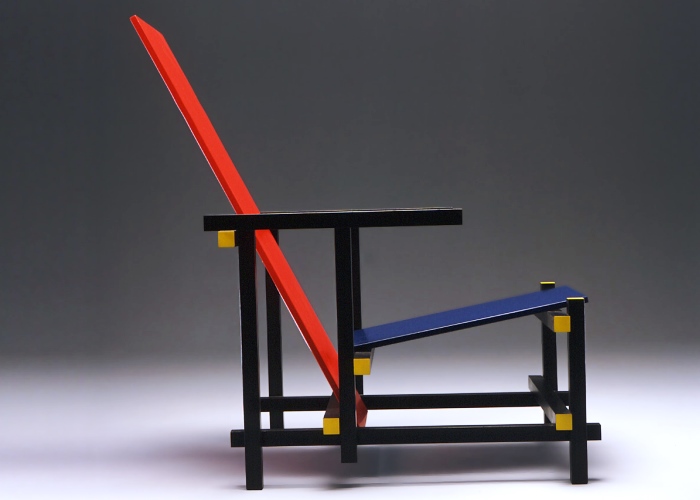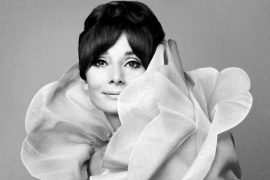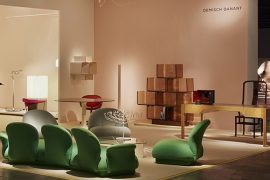On June 6, Sotheby’s Important Design auction will present a curated selection of exceptional design works from the last century, including chapters of International Arts and Crafts, Art Deco, American Studio, and Contemporary design. The sale is led by the landmark offering of eight extraordinary panels by Jean-Théodore Dupas from the Grand Salon of the legendary S.S. Normandie ocean liner.
Consigned from the esteemed Forbes Collection, the panels were acquired by Malcolm Forbes in 1981 and were the centerpiece of the main entry of the historic Forbes Galleries on Fifth Avenue for nearly thirty years. An exquisite “Religieuse” floor lamp by Pierre Chareau and monumental conference table by Émile-Jacques Ruhlmann further anchor the Art Deco section of the sale. Additional highlights of the sale include a rare side chair by Charles Rennie Mackintosh from the Jacqueline Fowler Collection, a unique dimetrodon sculpture by Claude Lalanne, and an incredible “Lectori Salutem” desk by Jeroen Verhoeven.
Lot n.69
Gerrit Thomas Rietveld
beechwood and plywood painted in original red, blue, black and yellow, overpainted
34 1/4 x 23 1/2 x 33 1/8 in. (87 x 59.7 x 84.1 cm)
circa 1923-1929
This lot is sold together with a letter by Gerard van de Groenekan and a statement from Mrs. Jongman.
It was not until the spring of 1919 that Rietveld joined the legendary De Stijl group, two years after it was founded, but his involvement would have great impact on the group as a whole. Eventually, his “rood-blauwe” chair would become the icon of the De Stijl movement. Rietveld’s baptism into De Stijl marked a turning point in his career: he gained access to key figures of the international avantgarde such as Bruno Taut, Walter Gropius, Kurt Schwitters and Laszlo Moholy-Nagy, and his radically new furniture designs were featured in numerous international publications.
The easy chair had its debut in the 1919 fall issue of De Stijl magazine, showing Rietveld’s first version of the armchair with side panels underneath the armrests. From these first years, a handful of chairs have remained, all of which have narrow armrests, solid wood seats and backrests and are unpainted except for a stained or wax finish. Around 1920-1921 Rietveld removed the side panels, replaced the thin rails and posts with slightly thicker ones and over the following two years he broadened the armrests and the seat panel (which initially had the same width as the back rest). Most importantly, Rietveld introduced color; first monochromes (white, black, grey) and soon combinations of colors, sometimes with contrasting touches of color to the rail ends.
Inspired by the work of his fellow De Stijl member Bart van der Leck, Rietveld started experimenting with the primary colors red, blue and yellow. The Witteveen child’s chair of 1921-1922 is believed to be the first chair in which this combination of colors was applied, followed soon after by the red-yellow-blue easy chair that was likely introduced in 1923. Although this color scheme would later bring the chair its world fame as an icon of De Stijl, it should be regarded as a De Stijl version of the chair. Instead of being the definitive design, it would turn out to be one of many color schemes with which Rietveld would experiment throughout the years. In fact, early versions of these chairs in red-blue are quite rare; among the approximately 40 pre-war chairs of this model identified by Marijke Kuper in her book Rietveld’s Chair, fewer than half have the red-blue color scheme (including those that were overpainted at a later date).
Most (arguably all) of the chairs in the red-blue color scheme have been overpainted over the course of time; often more than once and often in monochromes. The chair offered here seems to have only a single layer of later overpaint with remnants of the original red-blue color scheme still visible underneath, which is quite exceptional as Dutch conservator Jurjen Creman, who specializes in Rietveld furniture, has pointed out. Based on his research of the material and technical features of the chair, Creman identifies the chair as an authentic and early example that can be dated in the 1920s, not before 1923.
In a written statement from 1978, Gerard van de Groenekan dates the chair 1919-1923, referring to features such as the use of nails and old types of glue, as well as billets of a smaller diameter than later versions. However, the dimensions of the posts, rails, armrests and seat, as well as the use of plywood, suggest the chair is more likely a post-1922 production. More or less simultaneously with the introduction of the red-blue color scheme, Rietveld started using plywood instead of solid wood for the seat and backrest of his easy chair. He preferred this material for practical reasons, as it did not crack or warp as quickly as solid panels and was easier to process. Rietveld must have thought that the unconventional combination of solid beech and plywood could hardly be an issue if hidden under a layer of brightly colored paint. Little could he have known that it would be this very color scheme that would solidify his chair’s place in history as one of the ultimate icons of 20th Century Art and Design.
In addition to Van de Groenekan’s certificate, the chair is accompanied by an undated statement by Mrs. Jongman, written on the back of a color photograph (circa 1980), stating that the chair was purchased by her late husband, R. Jongman in 1921—likely an estimated acquisition date made many decades after the purchase. It remained in the family’s possession for decades before eventually entering the collection of the present owner. Interestingly, there is a red-blue chair in the Osaka City Museum of Modern Art which originates from the Amsterdam painter Roelf Jongman (1887-1957). This chair, mentioned in Marijke Kuper’s book, was recently examined by Jurjen Creman. According to Creman, the chair in Osaka has numerous similarities to the chair here offered, with the exception of a different type of plywood used for the backrest. Underneath the seat of the Osaka chair there are remains of a paper sticker which appears to be a Dutch shipper’s tag from before 1940. The chair offered here also has remnants of a shipper’s tag underneath the seat with some fragments of text, such as the word “colli” (referring to the number of items in the shipment) and the hand-written number “2”. Furthermore, there is a fragment which reads “[…]man” which could refer to Jongman. Did Jongman have two instead of one red-blue chair? The answer could be lost to history, but the least we can say is that both chairs were produced in the same period and are early examples of the red-blue color scheme.
—Rob Driessen
Rob Driessen (Amsterdam, Netherlands) is an art historian and independent consultant in the field of 20th Century Decorative arts & design specializing in the work of G.Th. Rietveld





